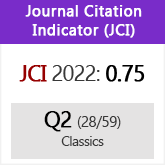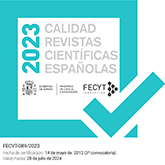The Catalogue of the Suitors of Penelope (Apollod., Ep. VII 26-30): Literary Tradition and Erudite Creation
DOI:
https://doi.org/10.3989/emerita.2021.09.2021Keywords:
Catalogues, the suitors of Penelope, cento, Odyssey, Apollodorus the mythographer, Homeric scholarshipAbstract
The catalogue of Penelope’s suitors transmitted by Apollodorus is an interesting case for studying the origin and functioning of the lists of names in the scholarly and mythological tradition. Apollodorus mentions 129 names, whereas the Odyssey only names 14 suitors, a fact that, together with the little mythological consistency of these characters outside the Homeric poem, seems to relegate this catalogue to the field of simple creation, rather than real tradition. However, the study of the names of the list and the comparison with other catalogues, some of them transmitted on papyri, allows us to recognize some of the criteria used to compile the list, such as the interpretation of Homer’s text itself, and some further compositional strategies that can be compared with the practice of the cento. In this sense, we can appreciate that, also in this very specific case, the erudite creation has a strong connection with tradition.
Downloads
References
Cameron, A. (2004): Greek Mythography in the Roman World, Oxford.
Carrière, J.-C. y Massonie, B. (1991): La Bibliothèque d'Apollodore. Traduite, annotée et commentée, Besanzón. https://doi.org/10.3406/ista.1991.2647
Cingano, E. (2005): «A Catalogue Within a Catalogue: Helen's Suitors in the Hesiodic Catalogue of Women (frr. 196-204)», en Hunter, R. (ed.), The Hesiodic Catalogue of Women. Constructions and Reconstructions, Cambridge, pp. 118-152. https://doi.org/10.1017/CBO9780511482243.007
Coarelli, F. (1998): «The Odyssey Frescoes of the Via Graziosa: A Proposed Context», PBSR 66, pp. 21-37. https://doi.org/10.1017/S0068246200004219
Forsdyke, J. (1957): Greece Before Homer. Ancient Chronology and Mythology, Nueva York.
Fowler, R. L. (2006): «How to Tell a Myth», Kernos 19, pp. 35-46. https://doi.org/10.4000/kernos.426
Fowler, R. L. (2013): Early Greek Mythography. Volume 2: Commentary, Oxford.
Fowler, R. L. (2017): «Apollodorus and the Art of the Variant», en Pàmias J. (ed.), Apollodoriana. Ancient Myths, New Crossroads, Berlín-Boston, pp. 58-175. https://doi.org/10.1515/9783110545326-011
Goldhill, S. (2009): «The Anecdote: Exploring the Boundaries Between Oral and Literate Performance in the Second Sophistic», en Johnson, W. A. & Parker, H. N. (eds.), Ancient Literacies. The Culture of Readings in Greece and Rome, Oxford, pp. 96-113. https://doi.org/10.1093/acprof:osobl/9780199793983.003.0005
Haslam, M. W. (1986): «3702. Mythological Compendium», en Haslam, M. W. (ed.) The Oxyrhynchus Papyri vol. 53, Londres, pp. 31-40.
Johnson W. A. (2010): Readers and Reading Culture in the High Roman Empire. A Study of Elite Communities, Oxford. https://doi.org/10.1093/acprof:oso/9780195176407.001.0001
Lowenstam, S. (1995): «The Sources of the Odyssey Landscapes», EMC 39, pp. 193-226.
Morgan, T. (1998): Literate Education in the Hellenistic and Roman Worlds, Cambridge-Nueva York-Melbourne.
Müller, F. (1913): Die antiken Odyssee-Illustrationen in ihrer kunsthistorischen Entwicklung, Berlín.
Nogara. B. (1907): Le nozze Aldobrandine, i paesaggi con scene dell'Odissea e le altre pitture murali antiche, Milán.
Nünlist, R. (2009): The Ancient Critic at Work: Terms and Concepts of Literary Criticism in Greek Scholia, Cambridge. https://doi.org/10.1017/CBO9780511575891
O'Sullivan, T. M. (2007): «Walking with Odysseus: The Portico Frame of Odyssey Landscapes», AJPh 128, pp. 497-532. https://doi.org/10.1353/ajp.2008.0007
Papadopulos-Kerameus, A. (1891): «Apollodori bibliothecae fragmenta Sabbaticia», RhM 46, pp. 161-192.
Papathomopulos, M. (1973): «Pour une nouvelle édition de la Bibliothèque d'Apollodore», Ελληνικά 26, pp. 18-40.
Papathomopulos, M. (2010): ΑΠΟΛΛΟΔΩΡΟΥ ΒΙΒΛΙΟΘΗΚΗ. Apollodori Bibliotheca post Richardum Wagnerum recognita, Atenas.
Roscher, W. H. (1902-1909): Ausführliches Lexikon der griechischen und römischen Mythologie, Band 3, Abteilung 2: Pasikrateia-Pyxios, Leipzig.
Scarpi, P. y Ciani, M. G. (1996): Apollodoro, I Miti Greci (Biblioteca), Milán.
Smith, W. (1894): Dictionary of Greek and Roman Biography and Mythology, vol. 3: Oarses-Zygia, Londres.
Usher, M. D. (1998): Homeric Stitchings: The Homeric Centos of the Empress Eudocia, Nueva York.
van Rossum-Steenbeek, M. (1998): Studies on a Selection of Subliterary Papyri, Leiden-Nueva York-Colonia.
Wagner, R. (1891): «Die Sabbaitischen Apollodorfragmente», RhM 46, pp. 378-419.
Wagner, R. (1894): Apollodori Bibliotheca, Leipzig.
Werweyen, T. y Witting, G. (1991): «The Cento. A Form of Intertextuality from Montage to Parody», en Plett, H. F. (ed.), Intertextuality, Berlín-Nueva York, pp. 164-178.
Yun Lee Too (2010): The Idea of the Library in the Ancient World, Oxford.
Downloads
Published
How to Cite
Issue
Section
License
Copyright (c) 2021 Consejo Superior de Investigaciones Científicas (CSIC)

This work is licensed under a Creative Commons Attribution 4.0 International License.
© CSIC. Manuscripts published in both the printed and online versions of this Journal are the property of Consejo Superior de Investigaciones Científicas, and quoting this source is a requirement for any partial or full reproduction.All contents of this electronic edition, except where otherwise noted, are distributed under a “Creative Commons Attribution 4.0 International” (CC BY 4.0) License. You may read here the basic information and the legal text of the license. The indication of the CC BY 4.0 License must be expressly stated in this way when necessary.
Self-archiving in repositories, personal webpages or similar, of any version other than the published by the Editor, is not allowed.
Funding data
Ministerio de Ciencia e Innovación
Grant numbers PID2019-108931GBI00














